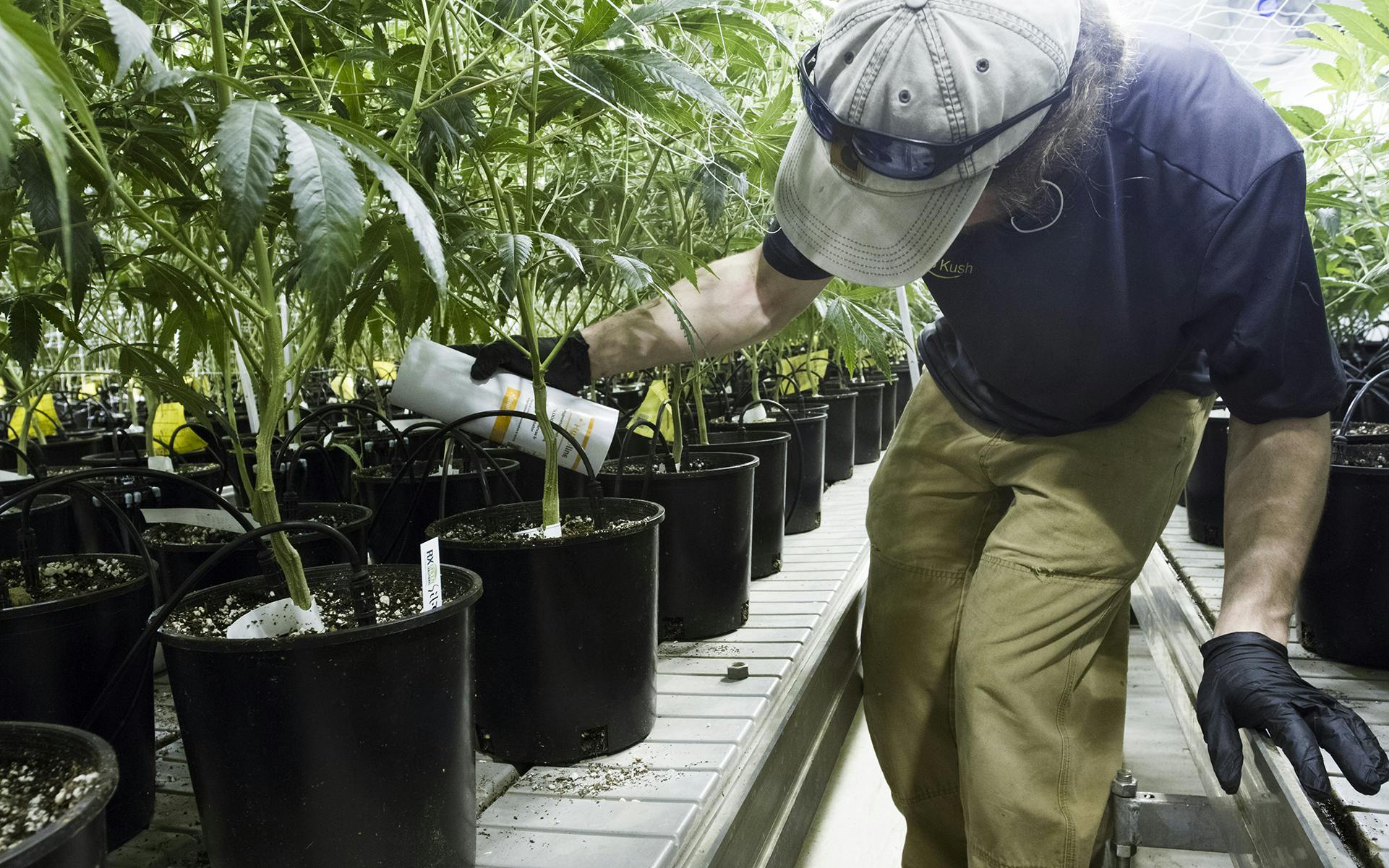Officially, cannabis cannot be “certified organic” due to federal laws that do not recognize it as an agricultural crop. As a result, the cannabis industry does not have access to USDA organic labeling. That’s why some companies are taking it upon themselves to create industry-specific standards equivalent to those of the USDA.
That’s where Clean Green comes into the picture. Described as “the closest you can get to organic,” Clean Green is a staple certification program available to cannabis producers and processors nationwide that allows consumers to identify products that meet “organic” standards.
To date, Clean Green is the largest cannabis certification program in the country. Since 2008, Clean Green has certified 175 clients and upwards of 60,000 pounds of cannabis a year—and that doesn’t even include trim and small buds processed for extracts and edibles. It’s currently offered in six U.S. states in addition to Puerto Rico, and will be moving into the East Coast and Canada later this year.
What Is Clean Green?
Clean Green was founded in 2004 by Chris Van Hook. Van Hook previously worked as a lawyer and organic certification agent accredited by the USDA. In 2003, he was contacted by a cannabis farmer who was looking to become certified organic, and while Chris wanted to certify the farmer, it was not possible under federal law.
So instead, Van Hook went on to create the Clean Green certification program, extending it to cannabis producers, processors, handlers, and products used in cultivation.
“It’s based strictly on what is considered the gold standard for the food and agriculture industry, which is the USDA standard,” Van Hook said. “No one can claim their cannabis to be organic, but you can become Clean Green certified if you are looking to adhere to the federal organic regulations.”
The “Clean Green Certified” Requirements
In order for a product to qualify as Clean Green certified, a producer or manufacturer must adhere to the following guidelines.
Input Products
All Clean Green certified cannabis or cannabis products must be created using pre-approved inputs that are also allowed under national and state organic programs. Inputs include:
- Seeds
- Clones
- Soils
- Nutrients
- Pesticides
- Edible manufacturing ingredients
- All other products used to create crops, extracts, or edibles
Browse Growing Supplies on Leafly
By following the same rules as USDA products, Clean Green is adhering to globally trusted organic standards that are used in all other fields of agriculture.
Facility Inspection
Clean Green inspection occurs on a yearly basis. Inspectors identify issues with plant health, such as mold, mites, and other pest problems that impact the safety and quality of the product.
Being Clean Green certified also means that your facilities do not harm the surrounding environment. Inspectors monitor how water and electricity are sourced in addition to observing how the facility interacts with its surroundings; drainage, soil erosion, and the health of the bordering environment are all essential considerations of the inspection.
“All inspectors have the same qualifications or more than a county agriculture inspector,” Van Hook said. “They all have Bachelor’s degrees in agriculture or a related science as well as five years of experience in the industry.”
Final Product
Be it flower, extracts, edibles, or something else, the final product will be eligible for Clean Green certification if it is:
- Free of prohibited inputs, mold, and pests
- Packaged according to regulations
- Paired with a tracking number
When a product comes with the Clean Green label, you can be confident that your purchase is clean, quality, and well cared for. Numerous Cannabis Cup awards have been given to Clean Green certified products over the years, striking a clear connection between clean cannabis and quality cannabis.
“To be standing with a farmer in their drying shed and the end of a good season and to be analyzing the quality of the cannabis as if you were in North Carolina looking in a tobacco shed is one of the most unique and wonderful experiences you can have as a person in agriculture,” Van Hook said, reflecting on his experiences with Clean Green.
As business grows, Clean Green aims to become the most widely recognized and trusted label among those looking for a healthy, quality product. It’s a business built upon passion for cannabis and sustainable farming as Clean Green seeks to protect and endorse the farms and businesses that go above and beyond the status quo.






